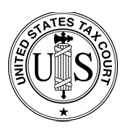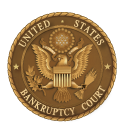Time for a fresh financial start!
We are bankruptcy attorneys located in Eastgate and Middletown, Ohio. Since 1992, we have served the people of the Greater Cincinnati area.
Can you never get ahead and are always struggling? Do you start to get ahead and an emergency comes along and you have to use credit cards again? Or maybe you don’t have enough income to cover your monthly expenses and debts? If you didn’t have all of those debts, would have the funds to make it through each month?
Do you think it is time for a fresh start? Bankruptcy can provide this for you. There is no reason to keep struggling.
If you are struggling, consider a bankruptcy filing. Many mistakenly believe they will lose everything they own. This is simply not true. Hundreds of thousands of people file for bankrupt in the United States each year – it is just not something that people go around talking about. Most of your assets will be protected under bankruptcy exemptions.
What exactly is bankruptcy? Bankruptcy is a federal law which will allow you to discharge your debts, wipe them clean, and get a fresh financial start!. There are two main chapters for consumers, Chapter 7 and Chapter 13.
CHAPTER 7
Chapter 7 is the most common chapter. Under this chapter you discharge all of your unsecured debts and get a fresh financial start. You will not have to pay any of your debts. Once you receive your discharge the creditors cannot harass you in anyway, including sending you bills, calling you, taking you to court or garnishing your wages.
CHAPTER 13
Chapter 13 can save your home from foreclosure or prevent repossession of your vehicle. Under this chapter you make a monthly payment to the Chapter 13 Trustee and they disburse this money monthly to your creditors. You pay back a portion of your unsecured debts at anywhere from 1% to 100%. After you complete your case you receive a discharge of debts and a report of all debts which were discharged through the case.
MORE INFORMATION
Call 513-752-3900 to schedule your free consultation with an experienced bankruptcy lawyer. We have 2 convenient offices – Eastgate, Clermont County & Middletown, Ohio. Since 1992, Keegan & Company Attorneys has helped thousands of people protect assets and enjoy relief from overwhelming debt.








